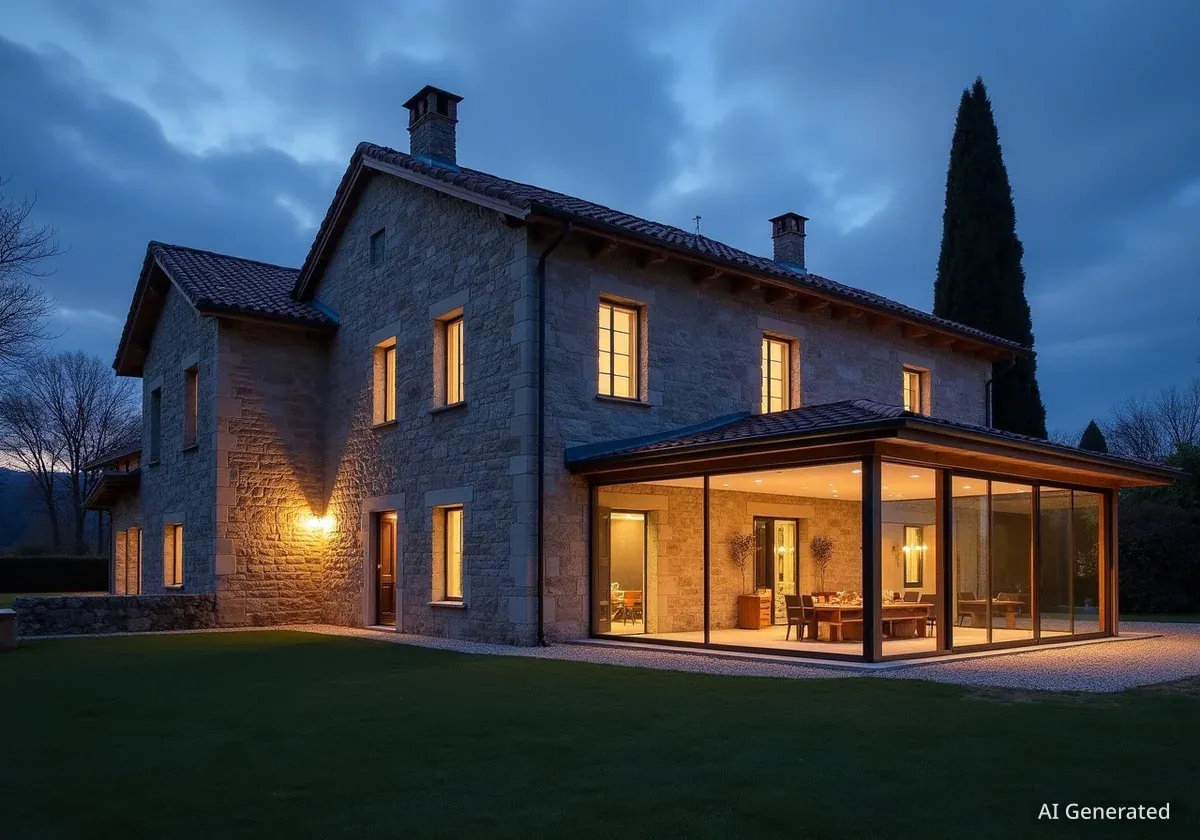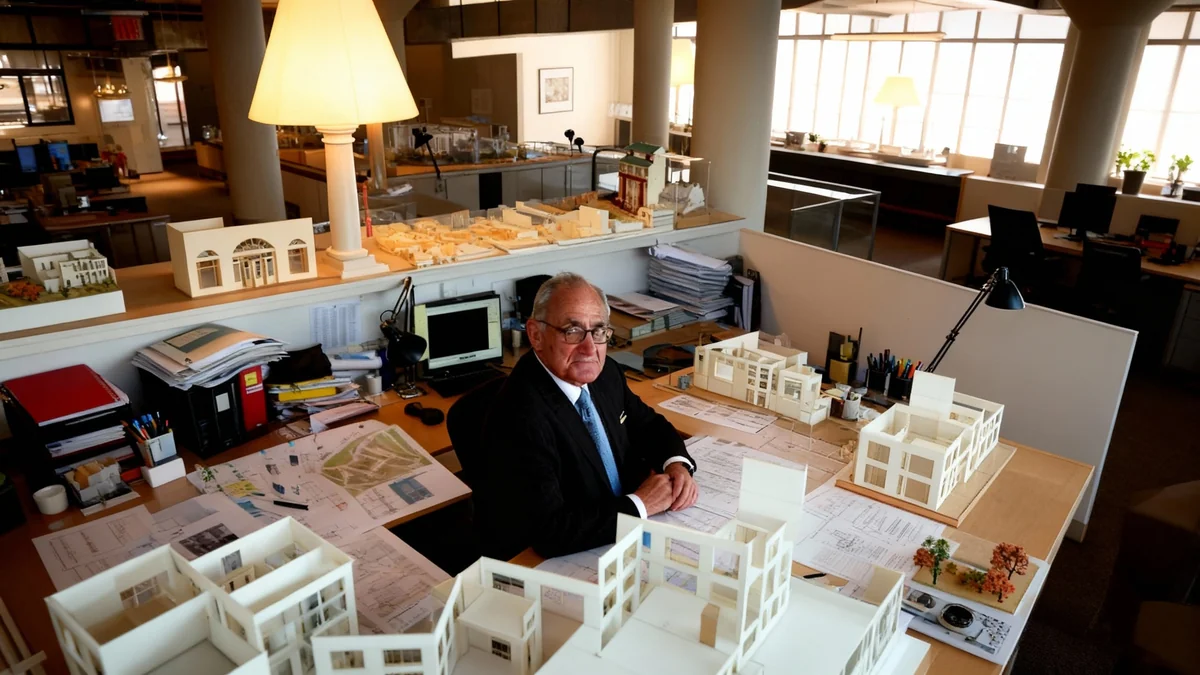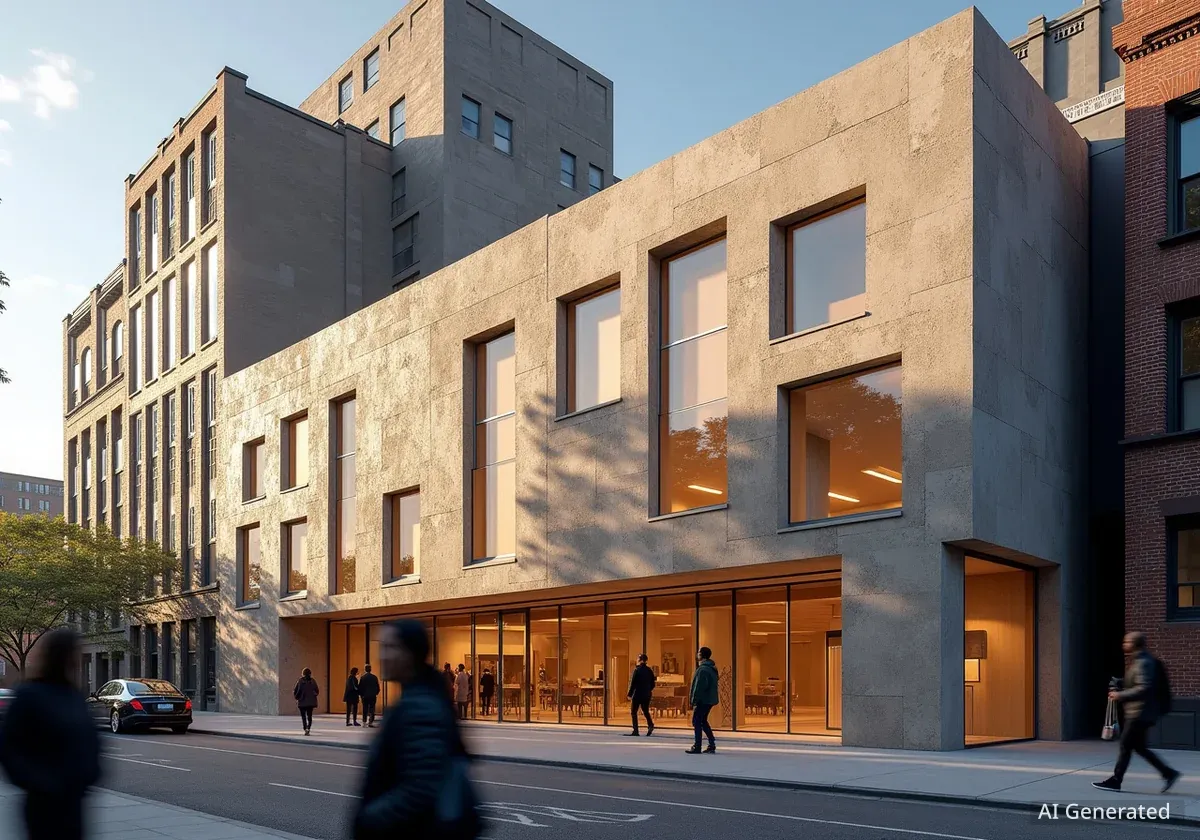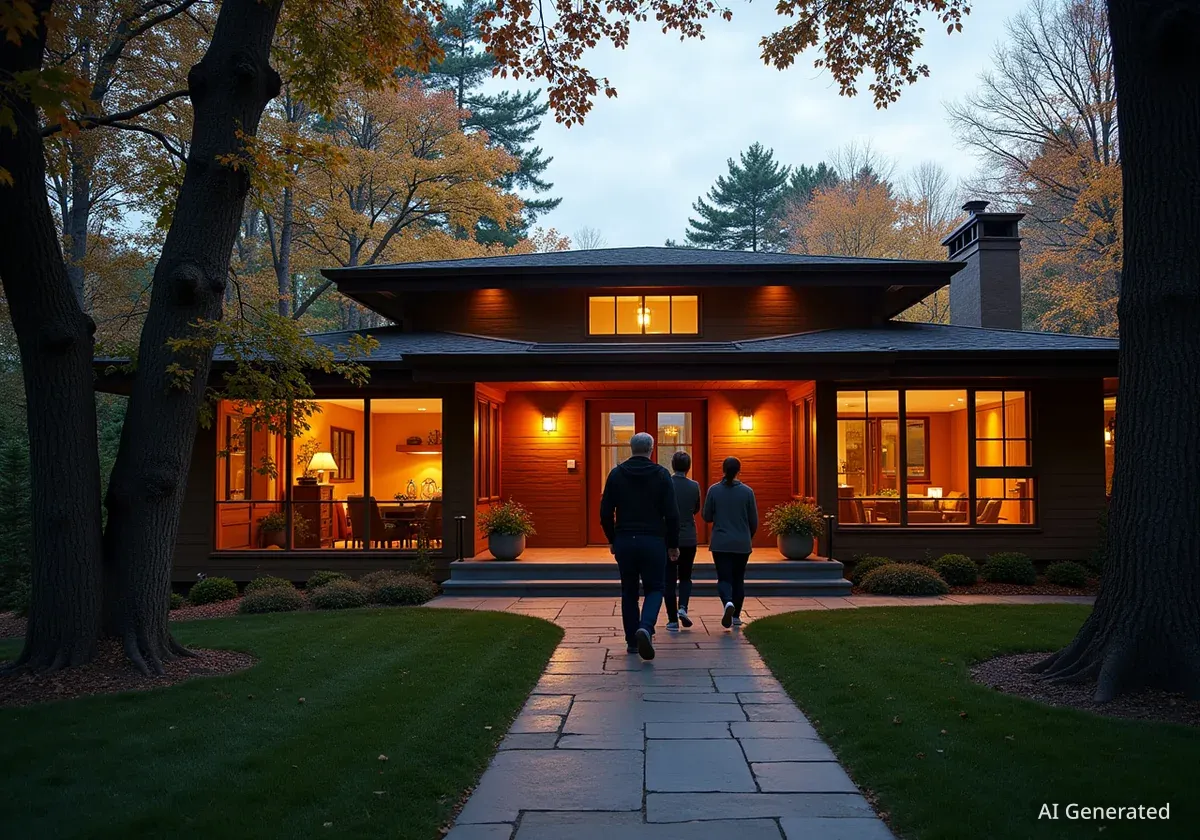An ancient stone farmhouse in Treviso, Italy, has been meticulously updated and expanded by Studio Bressan. The project, known as Casolare Biordo Vecchio, involves transforming a traditional portico into a spacious, glazed dining area. This renovation successfully merges modern architectural elements with the existing historic structure, preserving its original character.
Key Takeaways
- Studio Bressan renovated a historic stone farmhouse in Treviso, Italy.
- The project, Casolare Biordo Vecchio, introduced a contemporary glazed dining room.
- It blends traditional materials like stone and wood with modern iron and glass.
- The design emphasizes the building's history while creating a modern living space.
- A central fireplace connects the old and new sections of the home.
Integrating Modern Design with Historic Foundations
The farmhouse is located among the picturesque hills and vineyards of Asolo. Its owners commissioned Studio Bressan to convert the old stone building into a modern residence. The primary goal was to create a contemporary home while retaining as much of the original structure as possible.
Studio founder Emanuele Bressan highlighted the design philosophy. He stated that the new additions were crafted to complement the existing building respectfully, rather than mimicking its historical style. This approach aimed to enhance the site's identity without compromising its past.
Architectural Approach
Studio Bressan's method for Casolare Biordo Vecchio is an example of 'critical restoration.' This approach involves carefully introducing modern elements to an historic building. The goal is to achieve a balanced dialogue between old and new, ensuring continuity while embracing contemporary design principles.
The Challenge of Modern Introduction
Introducing a contemporary architectural language without losing the site's identity was a significant challenge. The design team focused on enhancing the building's historical memory. They aimed to highlight its true character without relying on nostalgia.
"The challenge was to introduce a contemporary architectural language without compromising the identity of the site," Emanuele Bressan told Dezeen. "The aim was to enhance the memory of the building without nostalgia, instead highlighting its truest signs and character."
The final design allows the building to exist in the present while clearly showing traces of its past. This restoration gives dignity back to a rural construction. It also harmonizes with the natural beauty of the Asolo hills and the daily lives of its residents.
Transforming the Portico into a Glazed Dining Room
A key aspect of the expansion is the new dining space. This extension emerged from what was once the farmhouse's south-facing portico. A small, sheltered area has been transformed into a double-height, glazed dining room. This new space opens directly onto a travertine terrace.
The contrast between old and new is evident here. The extension features a glass and metal structure. This stands against the thick plastered walls and deep, small openings of the original farmhouse. This design choice creates a clear visual distinction.
Material Contrast
- Original structure: Stone, wood, thick plastered walls.
- New extension: Glass, metal, exposed timber ceilings, painted steel.
This careful selection of materials ensures that the new elements stand out while still relating to the existing building.
The Central Fireplace and Living Areas
Overlooking the new glazed dining area is a living room. This space is located within the building's former stable. It sits slightly elevated on a raised wooden floor. The design centers around a suspended fireplace.
The change in floor level clearly marks where the old structure meets the new extension. This creates a subtle boundary between the historical and modern sections of the home. The fireplace serves as a central element in the new layout.
"At the heart of the new composition is the fireplace, which symbolically and physically ties together the old and the new," Bressan explained. "The former stable, now transformed into a living room, and the glazed portico turned dining area both orbit around this element, which serves as the fulcrum of the house, connecting spaces both horizontally and vertically."
This central feature helps unify the diverse spaces. It connects them both across the floor plan and between different levels of the house.
Interior Details and Material Choices
A balcony attached to the main en-suite bedroom overlooks the new dining area. Additional bedroom and study areas are also present. These spaces offer views of the surrounding gardens through new windows. These windows are carefully placed behind the home's original openings and shutters.
The timber ceilings within the extension have been left exposed. The supporting steel structure is also visible. It is painted a cream shade, which matches the rendered finish of the original home. This detail helps to visually integrate the new parts with the old.
Preserving and Introducing Materials
The project carefully balanced preservation and introduction of materials. Original elements such as stone and wood were kept in place. At the same time, new contemporary materials were brought in.
"On one hand, original materials such as stone and wood were preserved; on the other, a 'critical restoration' allowed for the careful introduction of contemporary elements such as iron and glass," Bressan noted. "This dialogue between old and new resulted in a sober and coherent balance, conveying continuity without giving up on modernity."
This approach created a balanced and consistent aesthetic. It ensures the home feels continuous, yet distinctly modern in its new sections. The blend of textures and finishes contributes to the unique character of Casolare Biordo Vecchio. This project stands as an example of thoughtful renovation in Italy's architectural landscape.
Project Details
- Location: Treviso, Asolo hills, Italy.
- Project Name: Casolare Biordo Vecchio.
- Key Feature: Double-height glazed dining room.
- Architect: Studio Bressan.
- Photography: Emanuele Bressan.
Other Notable Italian Farmhouse Renovations
This project by Studio Bressan is part of a broader trend in Italy. Architects are increasingly renovating traditional farmhouses. For instance, UK practice Jonathan Tuckey Design previously restored and extended a farmstead in the North Piemonte Region. Another example is Solum, which created a coastal home featuring a "labyrinthine" alleyway.
These projects demonstrate a commitment to preserving historical structures while adapting them for modern living. They often involve sensitive integration of new elements, respecting the original architecture and surrounding landscape. The demand for such renovations highlights an appreciation for Italy's rich architectural heritage.
The work on Casolare Biordo Vecchio underscores the potential for historic buildings to find new life. By combining careful preservation with bold contemporary additions, architects can create homes that honor the past while serving current needs. This balance is crucial for sustainable development and cultural preservation.




